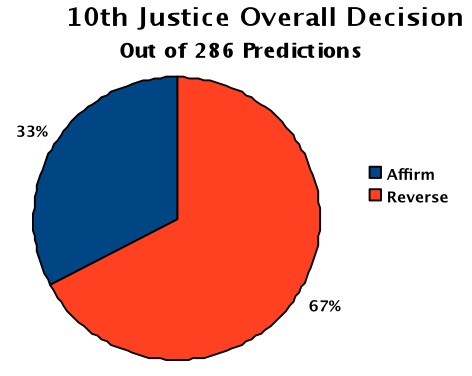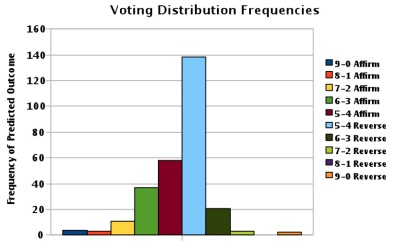Welcome to the first installment of Predictions of the 10th Justice, brought to you by FantasySCOTUS.net. FantasySCOTUS.net, the premier Supreme Court fantasy league, has over 1,300 members, who have made predictions on all cases currently pending before the Supreme Court. In this feature, we analyze these predictions, and try to explain how the Supreme Court will resolve top cases.

The first case we will look at is Citizens United v. Federal Election Commission, commonly known as the Hillary Movie case.
Out of 286 predictions, 192 members (67%) predicted that the Supreme Court will likely reverse the lower court’s decision regarding the case, and 94 members (33%) predicted that the Court will affirm the lower court’s decisions. Next we will explore the decision vote distributions and how the Justices will vote.
On this bar graph, the 9-0 and 8-1 Affirm splits each garnered less than 5 votes, along with 7-2, 8-1, and 9-0 Reverse. This graph reinforces the predicted outcome from the first chart. Most members are predicting a 5-4 Reverse, while those predicting an Affirm were more moderately split, slightly favoring a 5-4 split over a 6-3 split. Overall, the 10th Justice predicts a 5-4 decision reversing the lower courts holding.
But how will each Justice vote? Predictions, after the jump.

 RSS - Posts
RSS - Posts Facebook
Facebook



You must be logged in to post a comment.